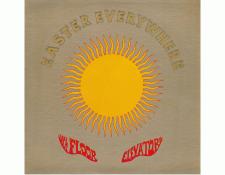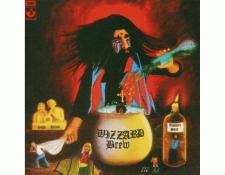It’s the time of year for saving money!
 Some of you readers have probably read my reviews of albums featuring restoration using Jamie Howarth’s incredible Plangent Processes technology. Our former editor Steven Stone wrote about Jamie first here at Audiophile Review (click here). I have subsequently reviewed album reissues by no less than Bruce Springsteen, Erroll Garner and The Grateful Dead which have employed this technology to correct for problems inherent in the original tape recordings.
Some of you readers have probably read my reviews of albums featuring restoration using Jamie Howarth’s incredible Plangent Processes technology. Our former editor Steven Stone wrote about Jamie first here at Audiophile Review (click here). I have subsequently reviewed album reissues by no less than Bruce Springsteen, Erroll Garner and The Grateful Dead which have employed this technology to correct for problems inherent in the original tape recordings.
Truth be told, I began this article focused on Band On The Run, one of Paul McCartney’s most beloved recordings. But, as I got deeper into it and then discussed the broader concept with some friends — as well as doing a bit of soul searching — I realized there was a bigger story to discuss that shouldn’t be just limited to Sir Paul’s ’70’s classic.
“So, what’s the problem,” you ask?

Well… there are a number of recordings out there which really could use some magic applied to them beyond “simple” remastering and maybe even “remixing.” And given that many of us have been surprised and impressed by revelatory restorations like Miles Davis’ Kind of Blue — which had been mastered in part at the wrong speed — and the discovery and repair of XTC’s Skylarking “polarity” error (a switched cable issue that reduced fidelity of the original recording significantly), it seems to be a topic worth at least discussing. Ultimately, many of us have hopes that someday more of these types of sonic issues on favorite recordings will be rectified for posterity.
Going back to the Plangent Processes technology for a very easy to understand listening primer, check out this vinyl rip which someone posted of Springsteen’s “Thunder Road” on YouTube (click here) from Born To Run. Listen closely and take notice of how it sounds a bit wonky at the very beginning of the song. It is one of many anomalies I’ve long noticed on this album (which I’ve owned since it came out, btw) but just accepted.
Now, listen to this remastered version from 2017 (click here) and notice that the sort of bent harmonica note on the original version isn’t really so bent any more and some of Bruce’s guitar chords which were a hair off key are now much more in tune. The whole song plays more in time too. These corrections are due to the Plangent Processes technology. You can read more about that restoration and its impact in my review here.

Thinking about other albums that could benefit from this fascinating technology and remixing in general, I’ll start first with the album that inspired this article in the first place….
Band On The Run is Paul McCartney’s massive global smash hit which, after years of effort, formally put the artist’s Beatle past behind him while simultaneously crafting an album many felt was “Beatle-worthy.” On that record he perfected a musical balance that sounded like… well… Paul McCartney (as opposed to “Paul McCartney, the former Beatle”).
Oddly enough — me being a huge Macca fan — Band On The Run was inexplicably never my favorite of his post-Beatle / solo albums (that honor goes to RAM). I always liked the singles and have owned the album for many years. Yet, still, as an end-to-end listen it never knocked me out for some reason and I never fully understood why until recently.
In 2017, Band On The Run was reissued, re-mastered at Abbey Road Studios and pressed on high quality vinyl in Germany. It took me a while but I found the remarkably elusive white vinyl pressing which several of my friends had told me sounded particularly amazing. Indeed, it sounds much better than my pristine original U.S. pressing.

Yet, it still feels off somehow, now quite audibly displaying a number of what feel like anomalies to my ear — quirky changes in pace and timing which jump out as possibly wrong. There are noticeable sour notes here and there. Some Beatle-fan-friends I’ve talked with about this issue agree but they chalk it up to the so-called “D.I.Y. charm” of the album (and that may be true, at least in part).
But… what if it isn’t? No disrespect intended, but I have wondered at times whether those little odd sounds were actually recording errors that were previously un-repairable and ultimately glossed over in latter stages of mixing and mastering?
Reconsider that Band On The Run was recorded in multiple studios beginning first near-disastrously in Nigeria. That initial studio legendarily proved to not be up to professional standards of the day, so eventually Sir Paul and company regrouped elsewhere to finish the album.
Could some of those weird notes be a result of problems in that funky recording studio back in the day?
 What if a poorly serviced multitrack recorder might have had unforeseen problems with tape speed accuracy? What if erratic voltage feeding into the studio might have resulted in electrical surges, ebbs and flows that might have possibly caused tape recorder motors to waver while recording? That might have contributed to creating odd sounding notes along the way when played back at proper speeds in a state of the art studio.
What if a poorly serviced multitrack recorder might have had unforeseen problems with tape speed accuracy? What if erratic voltage feeding into the studio might have resulted in electrical surges, ebbs and flows that might have possibly caused tape recorder motors to waver while recording? That might have contributed to creating odd sounding notes along the way when played back at proper speeds in a state of the art studio.
To understand what I’m talking about, click the links following: “Band On The Run” seems to be a bit out of tune at one of the edits (at the change between the first section into the second at around the 1:20 mark). Listen closely to “Bluebird” around 2:48 (“we live beneath the tree”) and then listen to those descending notes at around 2:59.
Now, imagine if those master multitrack tapes were run through Plangent Processes’ technology to fix those timing issues and then a restored, brand new mix was created from those time-corrected recordings. The result might be a magical new way to hear a fan favorite! And… speculating here… maybe — just maybe — it might be the way Sir Paul might have actually wanted the recording to sound. Only he can tell us, of course…

Here are some other albums that perhaps could benefit from different levels of restoration, whether simply remixing or doing more sophisticated forensic work on the original tapes:
The Bill Evans Trio with Symphony Orchestra – Despite being recorded by the legendary Rudy Van Gelder, I suspect this lovely and under appreciated album has a number of technical problems going on in it, some of which might simply be rectified by remixing. There are moments I’ve wondered about tape speed consistency which is even more noticeable (to my ear) on orchestral recordings. There is also a weird murkiness to this album which belies its RVG beginnings.

The Velvet Underground’s White Light/White Heat – The first two VU albums are brilliant but sometimes murky affairs, especially the second one, White Light/White Heat. Would cleaning them up be possible? Would it be blasphemous to attempt? I have a feeling Lou Reed would’ve tried it if he could have… Six years ago I wrote a review of the Pure Audio Blu-ray Disc version of this and even there I was asking whether a surround sound remix might open this very dense recording up a bit (click here to read that).
ELO II – The second album by The Electric Light Orchestra (the one with their epic version of Chuck Berry’s “Roll Over Beethoven”) has long been a muddy affair. It has always sounded (to my ear) like a compromised recording amidst all the layered orchestral parts. Maybe Plangent Processes can stabilize some of the wobbly sounding bits? Wouldn’t it be nice to remix it all to open up the sound and then spread out all those very compressed tracks over two LPs? While we’re at it, lets remix it into surround sound (and then the whole ELO catalog for that matter!).
 Guided by Voices’ Bee Thousand — Arguably a defining album of the DIY indie rock movement of the ’90s, Bee Thousand stands tall alongside other classic rock albums made in famous and fancy studios. Yet it was brilliantly cobbled together by Robert Pollard and his merry band of Ohio mayhem makers from humble sources — cassette multi-tracks, boombox recordings, cheap studios, basement jams, etc. Inevitably part of the charm of Bee Thousand is its otherworldly vibe created by these warble-y tape sources. But… imagine what it all might sound like if it could be time corrected via Plangent Processes and put in tune and such. Admittedly as a fan of the album the result might well be horrible and wrong. But then again, it also might be wonderful!
Guided by Voices’ Bee Thousand — Arguably a defining album of the DIY indie rock movement of the ’90s, Bee Thousand stands tall alongside other classic rock albums made in famous and fancy studios. Yet it was brilliantly cobbled together by Robert Pollard and his merry band of Ohio mayhem makers from humble sources — cassette multi-tracks, boombox recordings, cheap studios, basement jams, etc. Inevitably part of the charm of Bee Thousand is its otherworldly vibe created by these warble-y tape sources. But… imagine what it all might sound like if it could be time corrected via Plangent Processes and put in tune and such. Admittedly as a fan of the album the result might well be horrible and wrong. But then again, it also might be wonderful!
We probably will never know on that one…
I asked some friends on Facebook about this subject and here are some of their suggestions for albums in need of restoration work. Not all of these I agree with, mind you but I felt it important to show the list unfiltered. And as an FYI, some of them have been remastered already so I included links to my reviews of those in some titles below:
- Kiss’ Hotter Than Hell
- John Cale’s Paris 1919
- T
 he 13th Floor Elevators’ Easter Everywhere
he 13th Floor Elevators’ Easter Everywhere - Husker Du’s New Day Rising and Zen Arcade
- The Stooges’ Raw Power
- Yes’ Big Generator
- Jammin’ With Edward (featuring most of the Stones and Ry Cooder)
- The Beatles’ Rubber Soul
- Terry Reid’s Seed of Memory
- Van Morrison’s Moondance
- Muddy Waters & Johnny Winter’s Hard Again
- The Bevis Frond’s Valedicatory Songs
- Blue Oyster Cult’s first four albums
- XTC’s English Settlement
- Pink Floyd’s Atom Heart Mother and Saucer Full Of Secrets
- Supertramp’s Breakfast in America
- Joni Mitchell’s Court & Spark
 Fairport Convention’s Liege & Lief
Fairport Convention’s Liege & Lief- Stevie Wonder’s classic albums (1970-1980)
- Nurse With Wound’s Homotopy To Marie
- Laura Nyro’s first five albums…
- Toto’s self titled debut album…
- Bruce Springsteen’s Magic
- Roy Wood’s Wizzard’s Brew
What are some of your favorites you would like to hear remixed, restored and possibly reinvented?
Let us know below…











